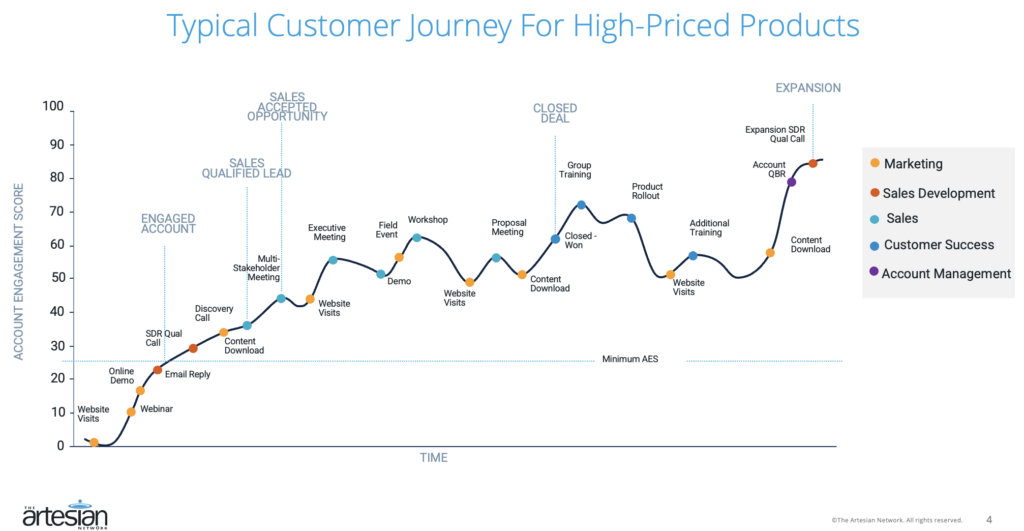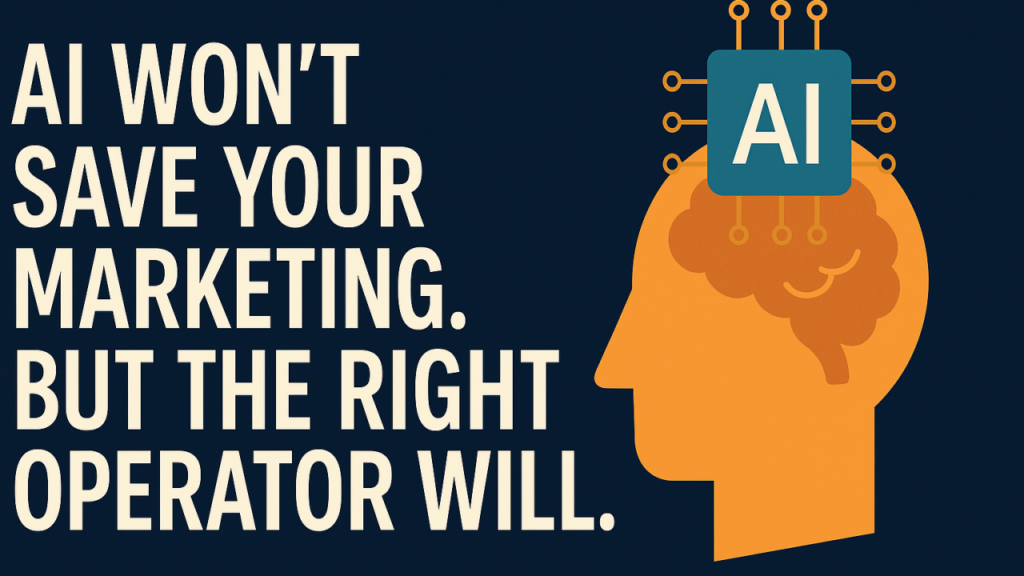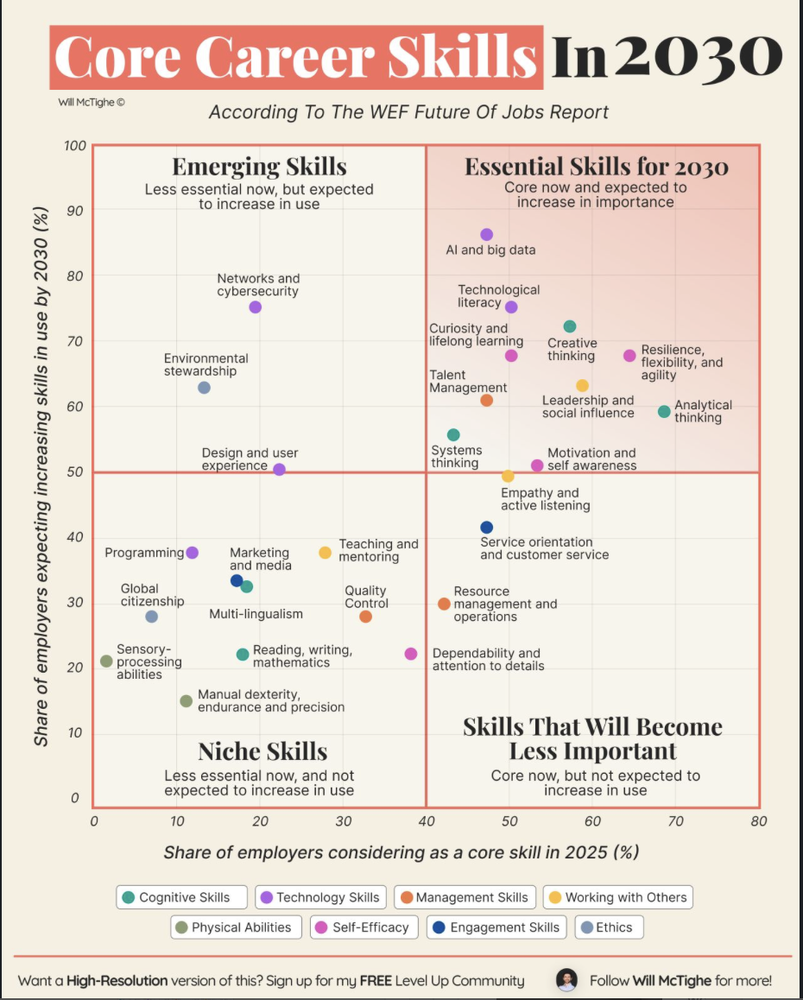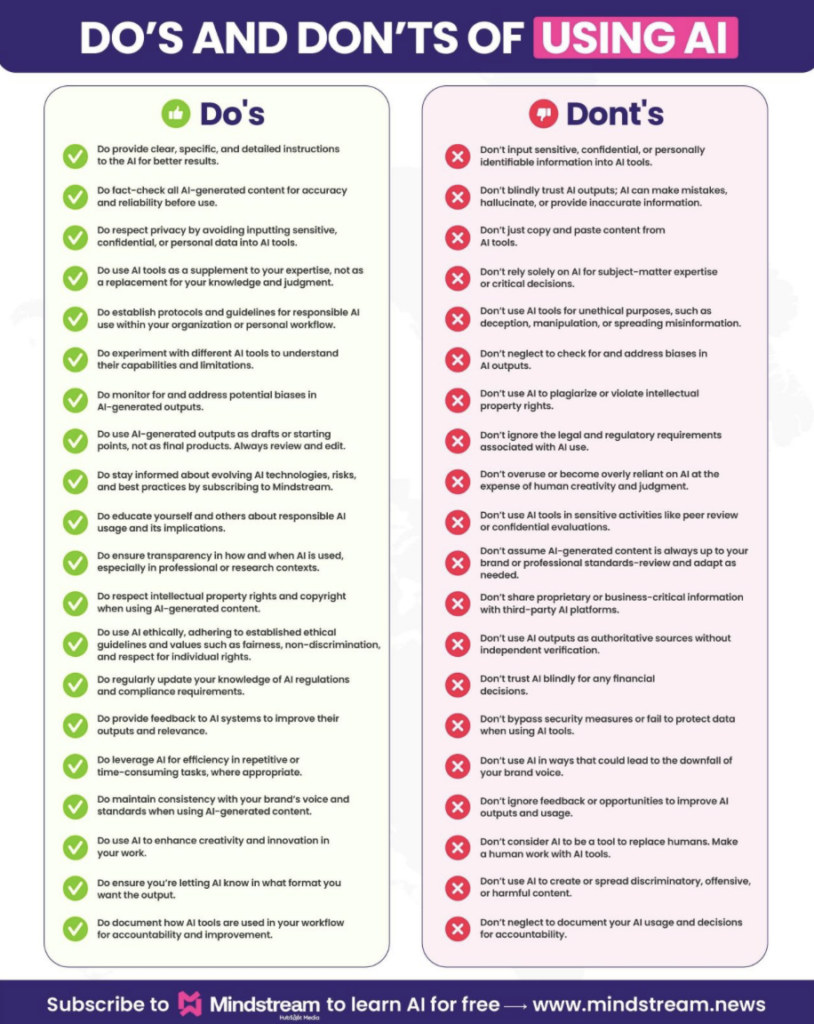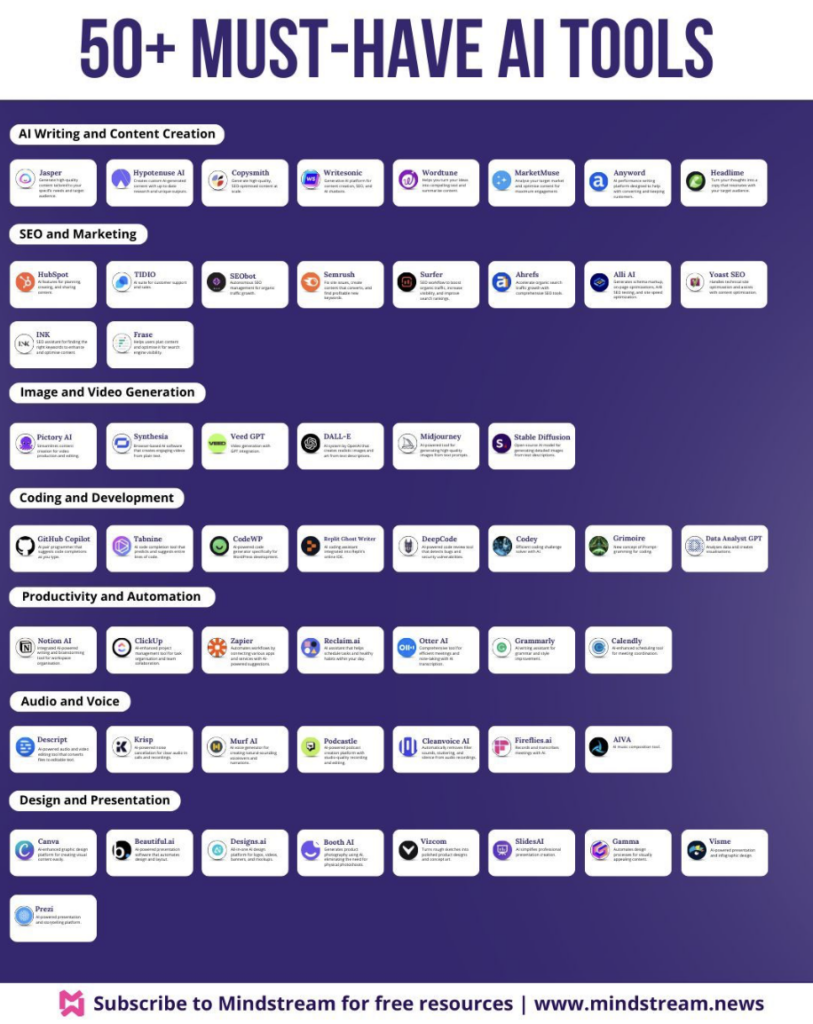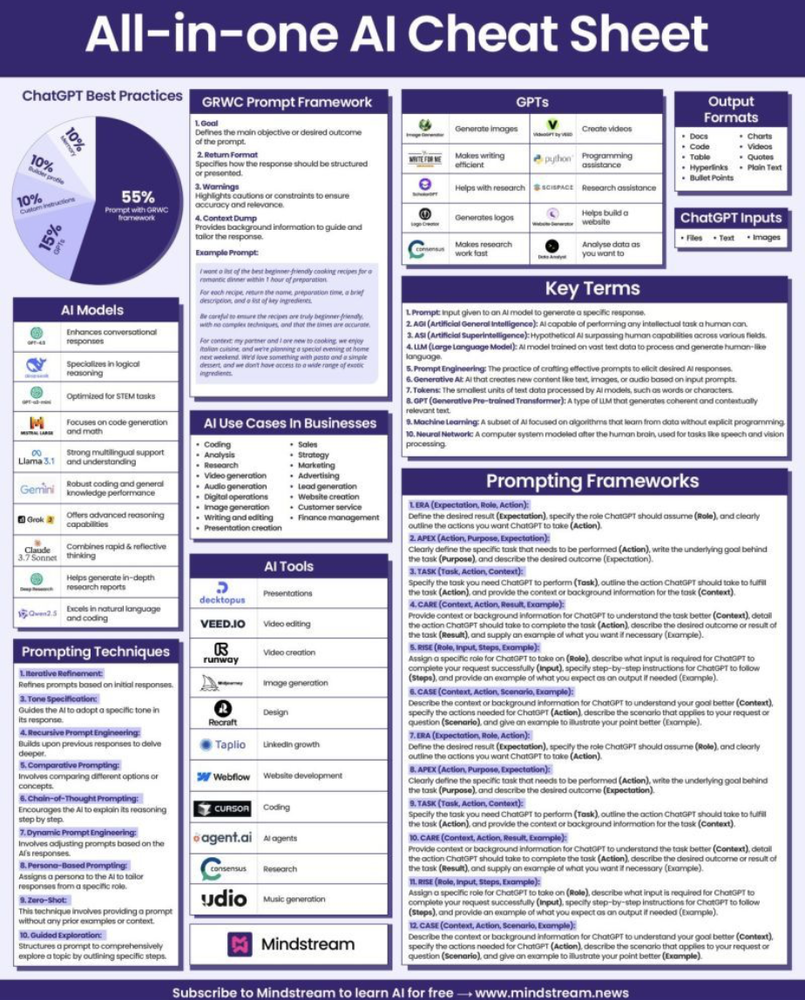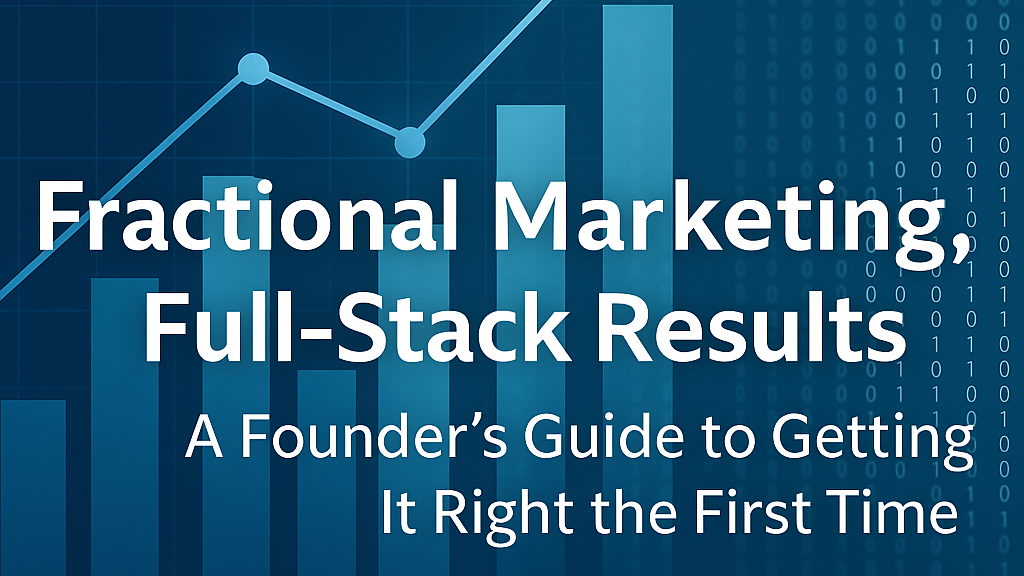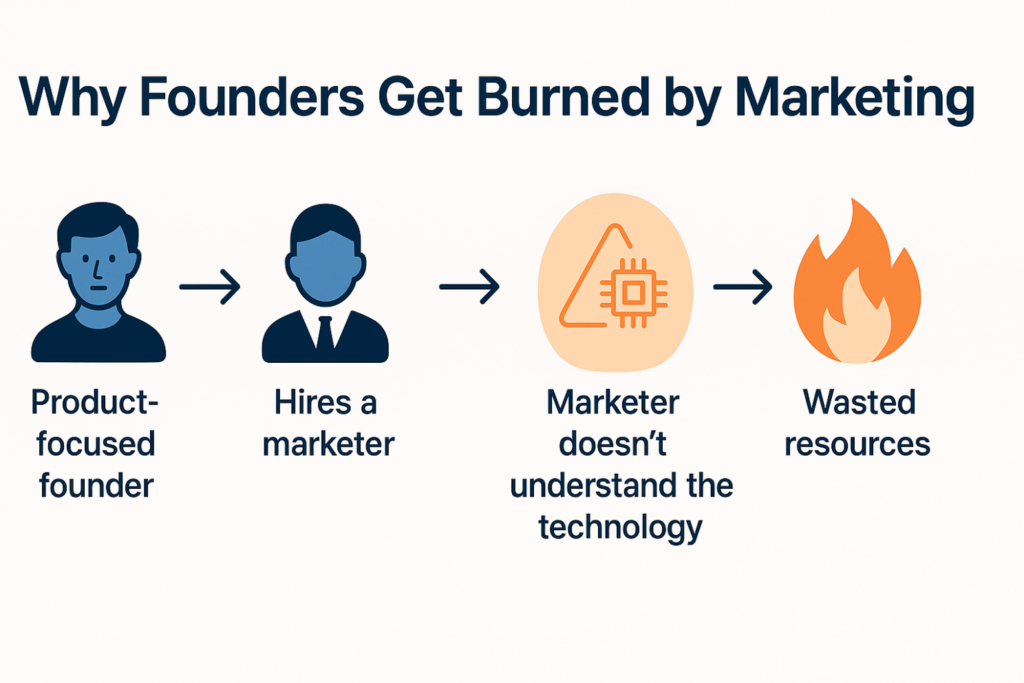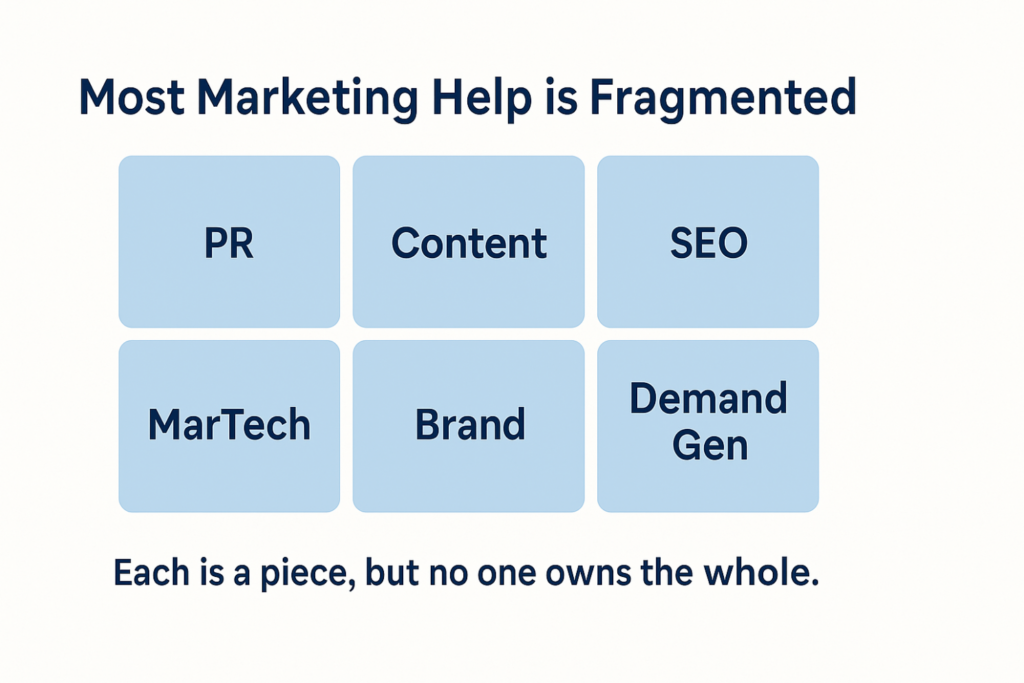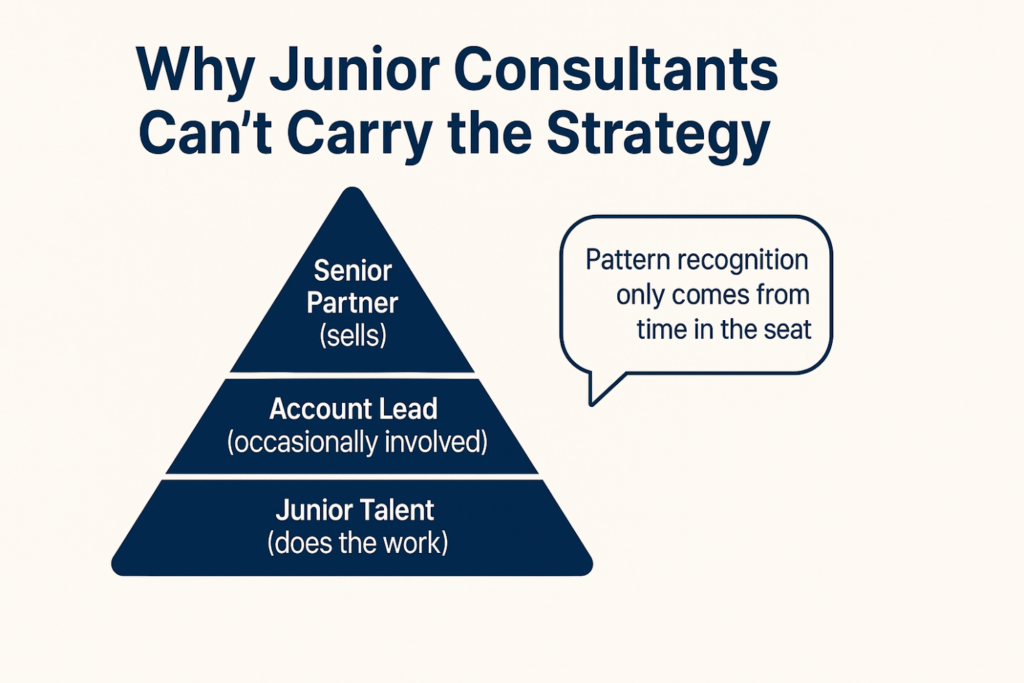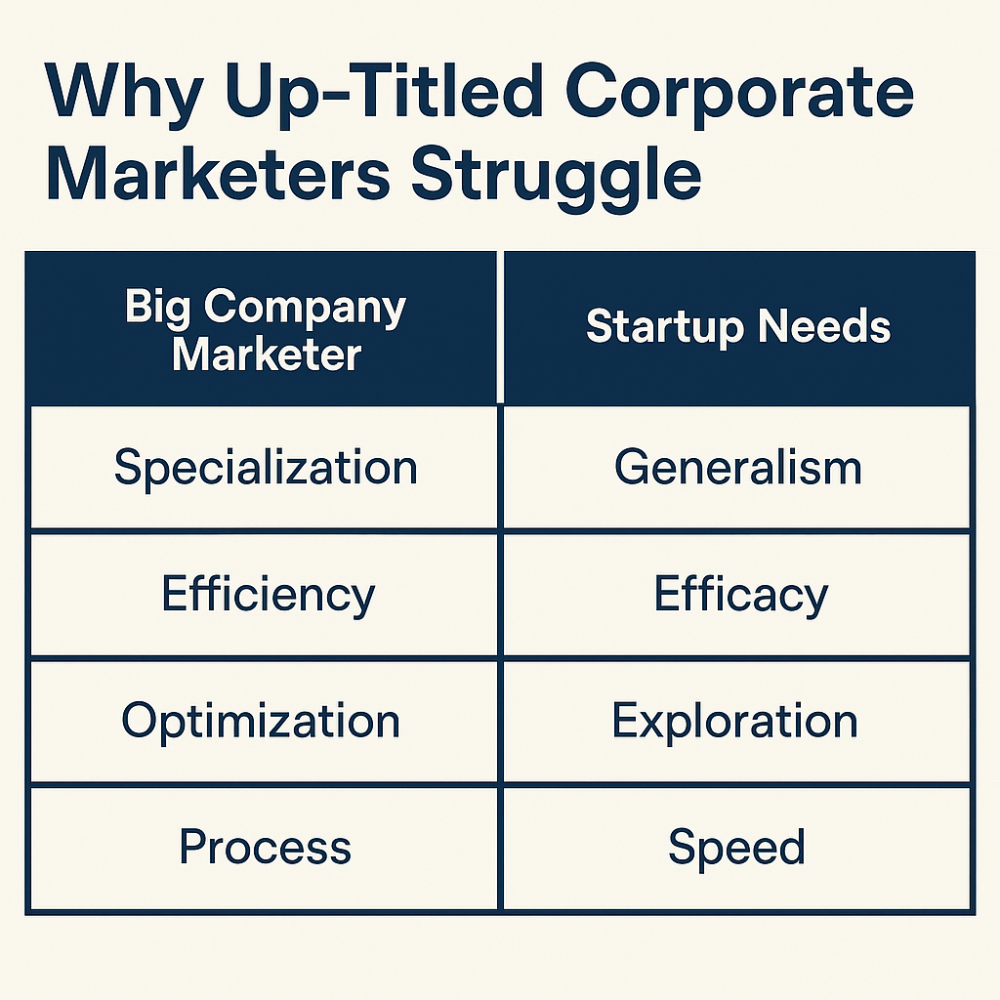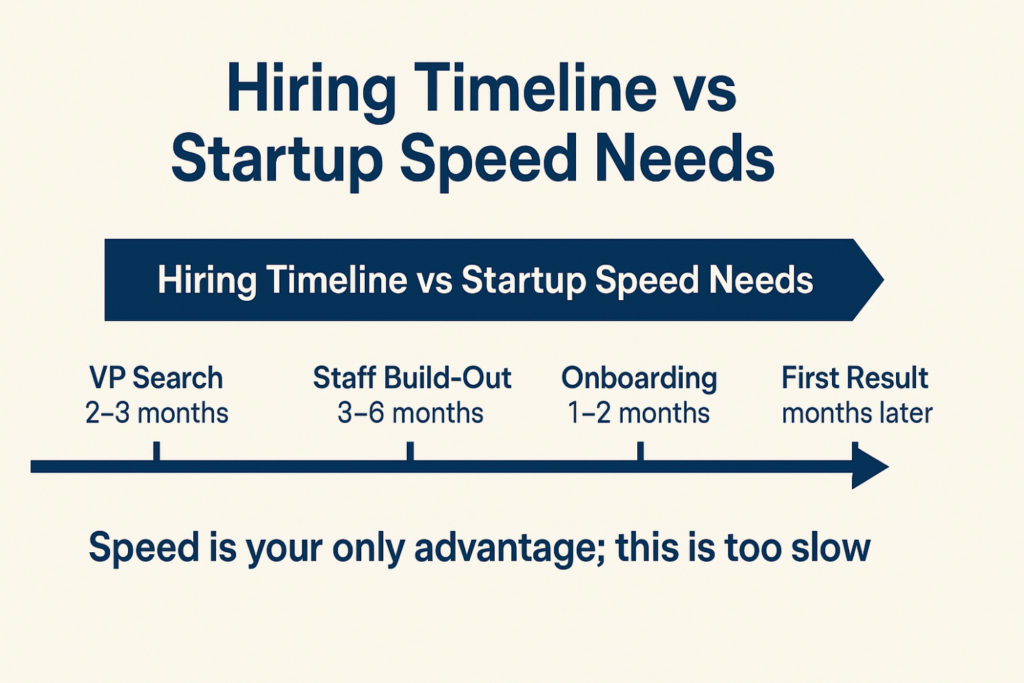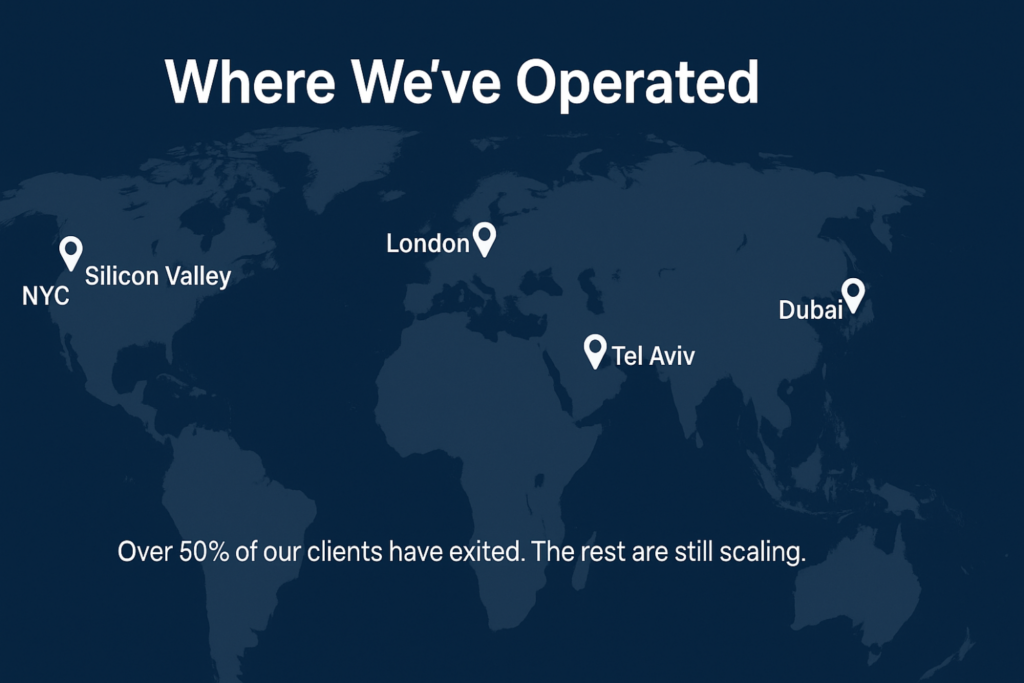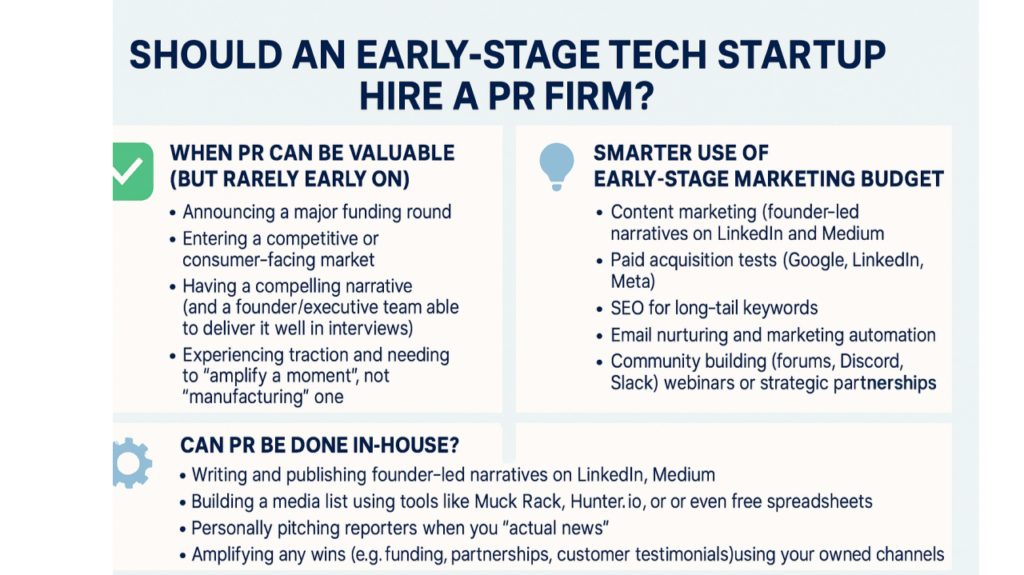
✅ When PR Can Be Valuable (But Rarely Early On)
A PR firm can be useful if: – You’re announcing a major funding round (Series A or higher). – You’re entering a highly competitive or consumer-facing market where media buzz directly drives business outcomes. – You have a compelling narrative and a founder/executive team able to deliver it well in interviews. – You’re already experiencing traction and need to amplify a moment, not manufacture one. Even then, PR works best when paired with existing momentum—not as a substitute for product-market fit or customer validation. We, at The Artesian Network have worked with many highly valued great PR firms in the past. We have gotten our clients as featured stories on Bloomberg TV, CNBC Top Disruptive Company Lists, and at the top of headlines on all the tech and business blogs and publications.
But PR Firms are best used at a later stage in the company lifecycle. With resources tight in the early years, you will receive a much greater ROI in other marketing tactics.
🚫 Common Pitfalls of Hiring a PR Firm Early
High cost, low control: Most PR firms charge $8K–$20K/month retainers. That’s a huge chunk of budget for startups with unclear ROI. – No guarantees: Media hits are never guaranteed. You’re paying for effort, not results. – Low relevance: Unless your startup already has a unique, newsworthy hook, reporters often pass on the story. – Misaligned incentives: PR firms optimize for coverage, not customer acquisition.
💡 Smarter Use of Early-Stage Marketing Budget
At the seed or pre-seed stage, founders should prioritize direct, measurable growth activities: – Content marketing (especially founder-led thought leadership on LinkedIn) Paid acquisition tests (Google, LinkedIn, Meta) – SEO for long-tail keywords – Email nurturing and marketing automation – Community building (forums, Discord, Slack) – Webinars or strategic partnerships These channels yield clearer attribution and faster feedback loops.
Strategy for PR Outreach for Early-Stage Startups
📣 Define the Newsworthy Angle
Product launch? – Customer milestone? – Funding announcement? – Major hire or partnership? – Social impact?
📋 Build a Media List
Use tools like: – Muck Rack (https://muckrack.com) – Hunter.io (https://hunter.io) – Manual research via LinkedIn, Twitter, and article bylines Segment by: – Tech journalists – Industry-specific reporters – Local business press – Podcasts/newsletters relevant to your space
✉️ Craft the Press Email (Pitch)
Example Subject Line:
“New AI Tool Helps SMBs Save Hours on Client Research — Interview Ready”
Example Email Body:
- 1 short sentence of relevance
- 1–2 sentence summary of your news
- Why it matters now
- Link to press kit or landing page
- Offer exclusive quotes, data, or interviews
🗂️ Prepare a Lightweight Press Kit
Include: – Founder bio and headshot – One-pager about the company – High-res logo and product images – Key metrics or validation (users, customers, revenue milestones) Contact information Host it on a Notion page or Dropbox link.
📤 Pitch Strategically
Personalize each pitch (reference an article or beat they cover) – Use a CRM or spreadsheet to track opens and responses – Follow up once after 3–5 business days
📢 Amplify Any Wins
Share published stories on LinkedIn and Twitter – Add logos of featured publications to your homepage – Mention press in investor or prospect meetings – Repurpose quotes/testimonials in sales and fundraising decks
✍️ Final Recommendation
Unless you’re making a high-stakes, public announcement with broad appeal (e.g., $10M+ Series A, celebrity investor, or product going viral), skip the PR firm and invest in growth tactics with short-term ROI. When the time comes, you can revisit PR—possibly with a part-time contractor or a specialist aligned with your GTM goals.



